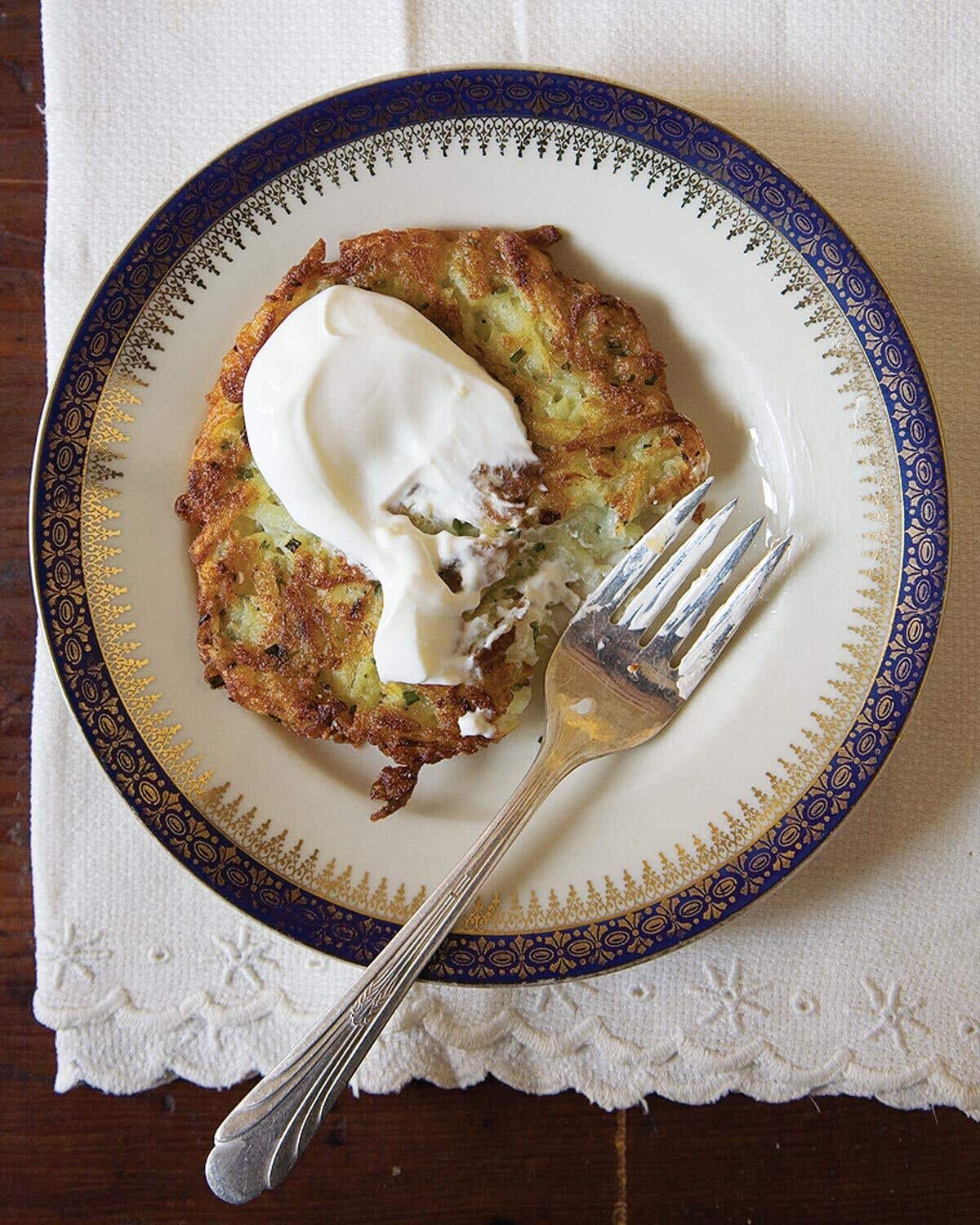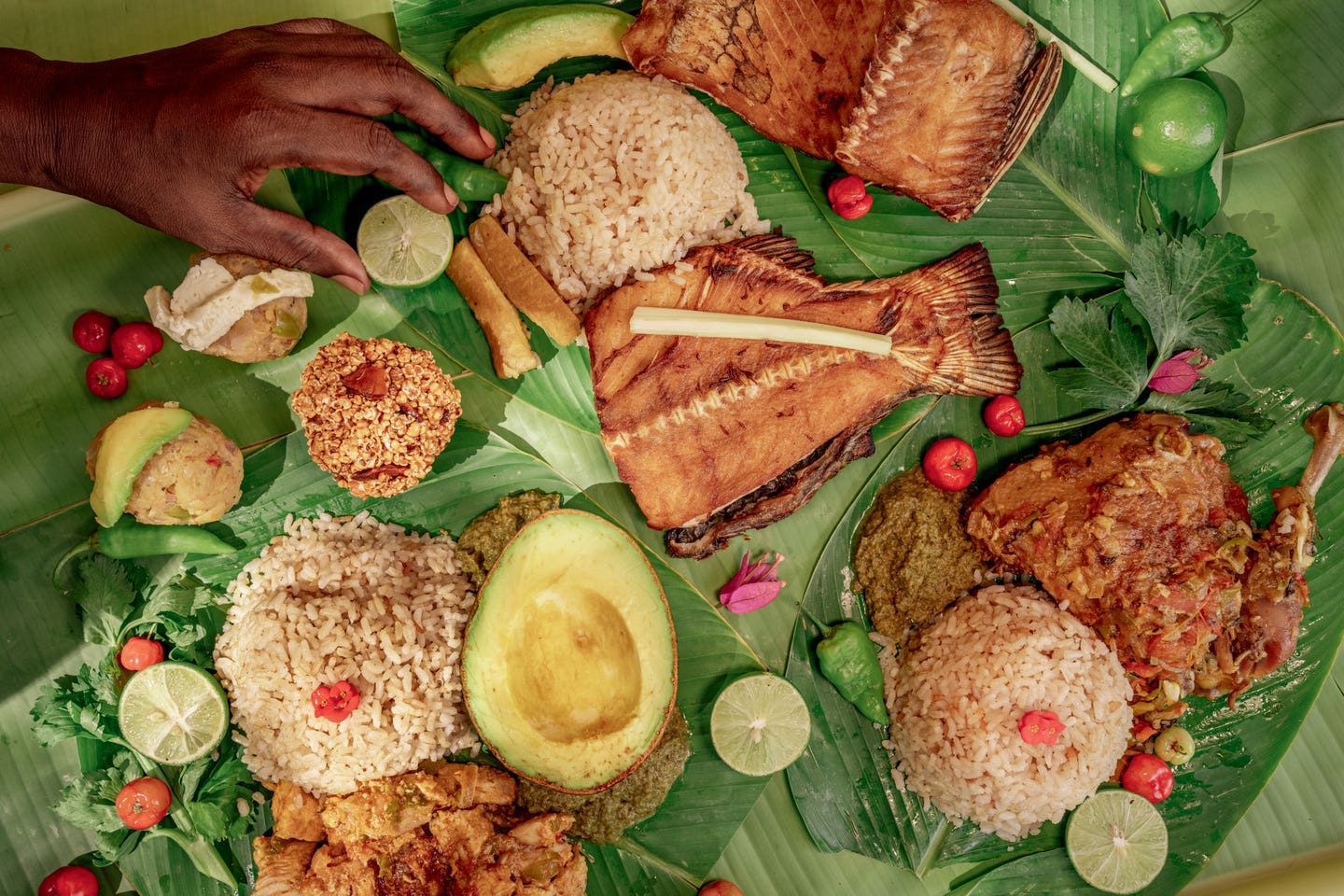
Colombia and West Africa Unite on the Plate in This Fascinating Food Town
The local cuisine in Palenque, the first free African village in the Americas, illuminates an enduring and oft-overlooked history.
Down a gravel pathway in a rural Colombian town, just over 20 miles from the Caribbean coast, a group of African women donning billowy dresses offer up baskets filled with sweets: coconut-laden cocadas, chewy caballitos, and the ever-so-sweet popped millet balls known as alegría, from the Spanish word for “joy.” Cloaked in the saturated red, yellow, and blue of the Colombian flag, the women, known as palenqueras, make a living here peddling fresh fruits and homemade treats to locals and visitors alike. But it’s not just the palenqueras’ snacks that are sweet; the quiet roads of San Basilio de Palenque are paved with the sweetness of freedom.
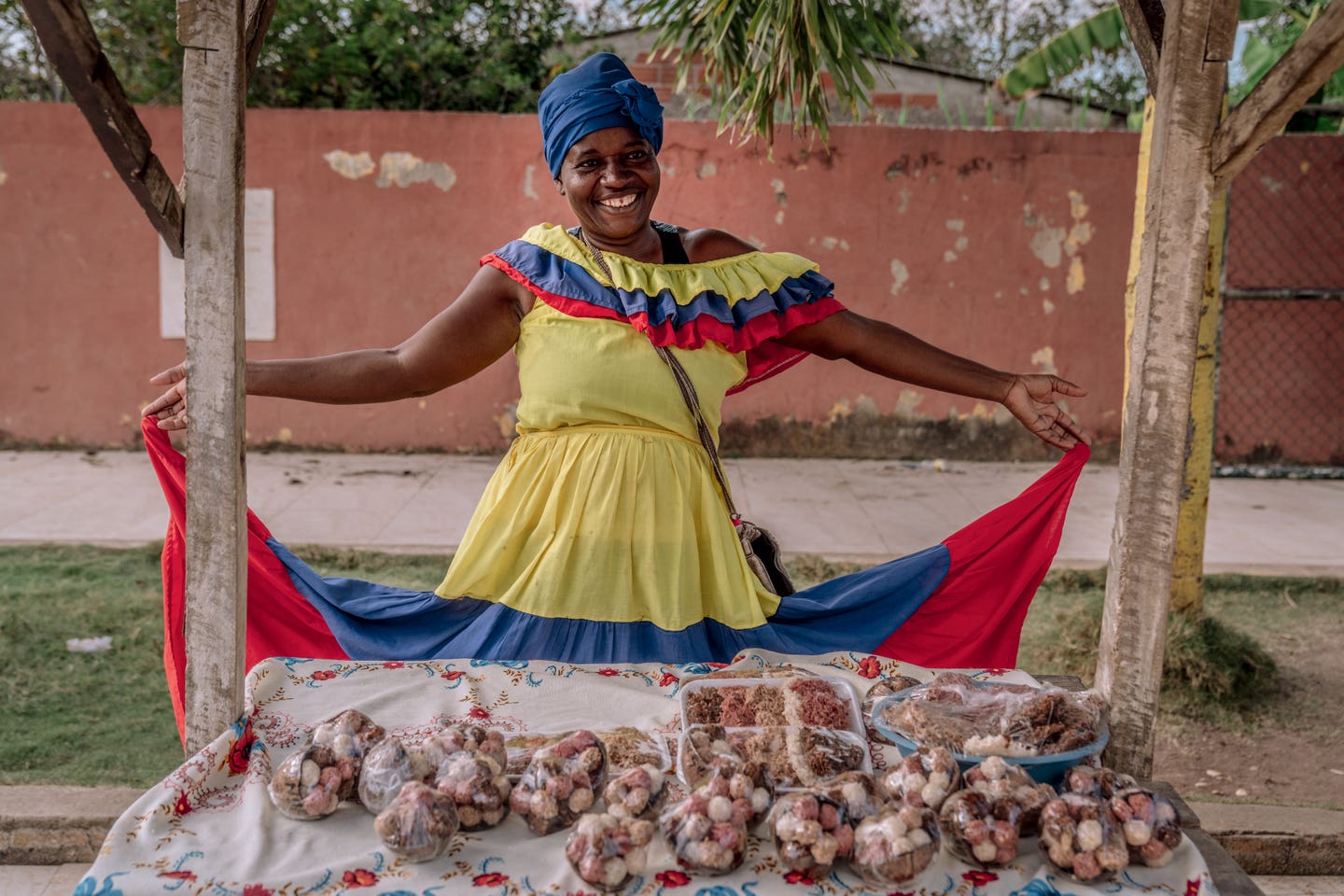
Palenque, as its name is typically shortened, is the first free African village in the Americas, and descendants of African slaves exist here in a way that’s foreign to most other descendants of slaves, myself included: There is no police system here, and never has been. Instead, locals self-govern, and approach disputes using locally-trusted practices of forgiveness and conflict resolution. This atmosphere has enabled the community’s African heritage to flourish well beyond the legacy of Colombian enslavement. Elders retain ancient medicinal practices, young musicians revitalize erstwhile music traditions, and home cooks and chefs preserve their generations-old recipes and culinary techniques—all rooted in customs and practices brought over by their enslaved ancestors in the early 16th century.
That heritage was immediately evident even before I arrived in Palenque, along with about 10 other Black American travelers. Roughly 4.7 million Colombians are of African descent, making up just under 10 percent of the country’s population. In Cartagena, 30 miles or so to the north, their influence is most recognizable in the street food: Arepas, the popular flatbreads frequently stuffed with meat and cheese, are made from a dough of ground and mashed maize, a common ingredient for Indigenous and Black Colombians. Among vendors doling out papas con huevo y carne (potato balls with eggs and meat) and potato- or meat-stuffed empanadas, the palenqueras, who sometimes commute north to make more money in Cartegena’s main squares, are easily visible in their vibrant colors, selling the same sweets I encountered in their storied hometown.
In Palenque, though, that African influence extends far beyond the food: It’s an inextricable feature of the place itself. As you arrive in town, you are welcomed immediately by a striking statue of the freedom fighter Benkos Biohó, a Guinea Bissau–born revolutionary who escaped a Spanish slave port in Cartagena in the 16th century and led his people to freedom. Settling in the mountainous Montes de María region of the country, he organized a runaway slave network to help other enslaved Africans reach their liberation. He was ultimately captured and executed in 1621, but his efforts toward freedom weren’t entirely in vain: In 1713, after years of failing to take back the settlement, the Spaniards surrendered their attacks, and Palenque effectively became the first free African village, by decree of the King of Spain. Today, lionized through the brass statue, Biohó extends a single shackled arm, grasping for one more chance to bring another soul into a free world.
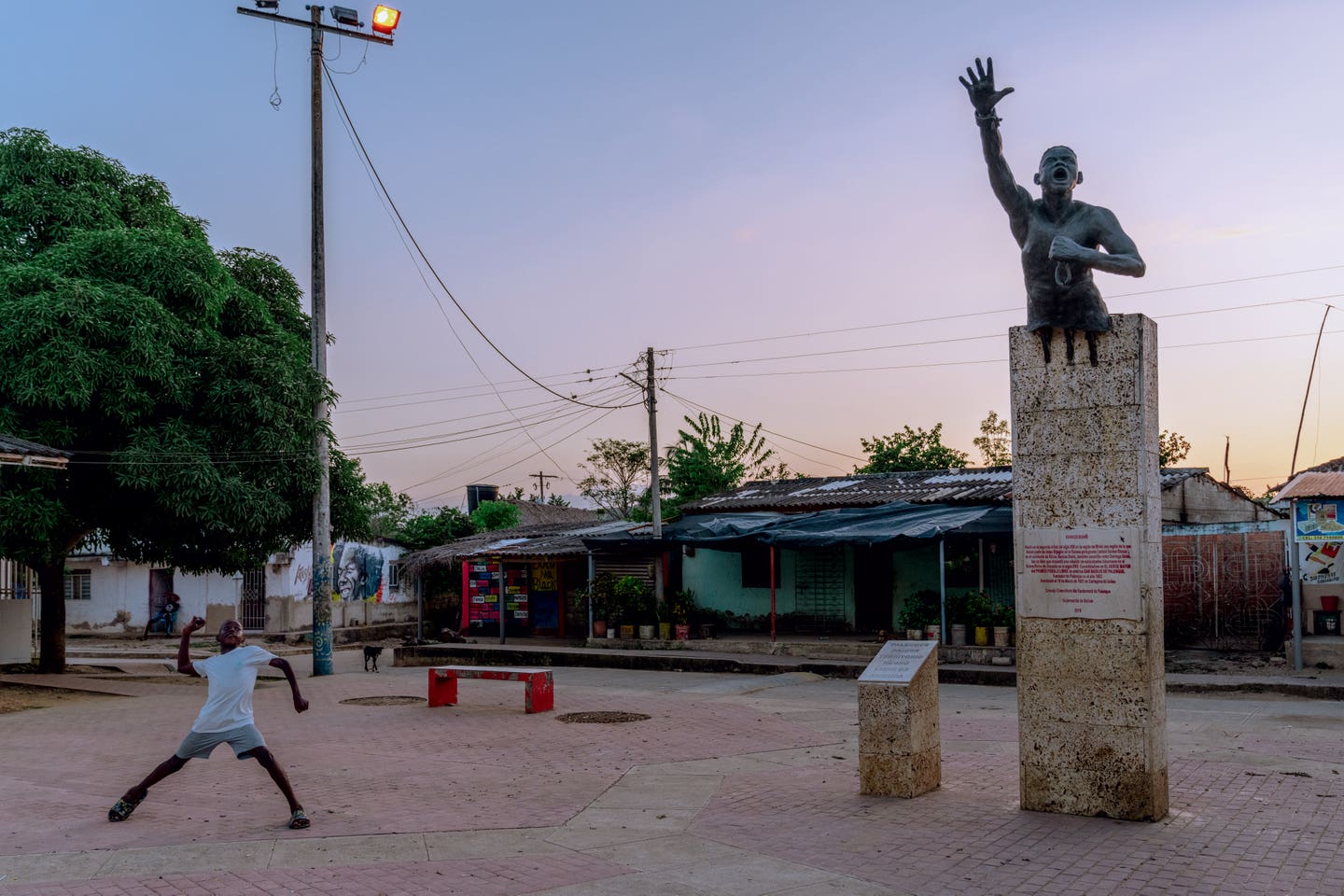
More than 300 years after its founding, food, art, and music have become some of Palenque’s most prominent features. Walking through the gravel roads, songs drift from open windows, while local bands perform in the streets throughout the day. Drum beats and the sounds of rhythmic steps merge with the music as it crescendos and reverberates across town. Brightly painted murals adorn storefronts and walls, many depicting Black women experiencing the ebbs and flows of life.
As I swipe beads of sweat from my forehead, I see a mural showing a Black woman with words inscribed in her braids, an ode to a clever trick among enslaved African women who braided maps and instructions into their hair to provide key information and escape routes during the transatlantic slave trade. They would braid seeds into their hair as well, which enabled ingredients like tamarind, bitter melon, kola nut, and the subtly sweet melegueta pepper to become part of Colombia’s foodways. Elsewhere, a stoic Black woman’s eyes seem to meet the end of the short road, and a colorful “Black Lives Matter” sign points to Black people’s interconnected, global fight for liberation.
I am soon encircled by a group of children, recruiting me into their game of tag as we approach “The House of Music.” Founded by local musical group Kombilesa Mi (which means “my friend,” in Palenquero, the Creole language here), the small museum is home to a collection of regionally specific instruments, like the Cuban-inspired marímbula and large drums called buleadors. The band members hope to transform the space to welcome even more visitors, and are actively raising money to reach their $12,000 goal. “Music is really the heart and soul of Palenque,” says Blue Apple Beach hotelier Portia Hart, “so having an institution like this readily available for the community and visitors is imperative.”
Palenque’s music history includes a combination of traditions brought over and adapted by enslaved Africans from places including Nigeria and Central Africa. In 1927, Cuban influences reached the local music scene, which continued to evolve as more local musicians drew inspiration from other parts of the diaspora. As we walk to lunch, we are treated to some music from a local group that march near us down the road, dressed in some of the cleanest multicolored short sets in the area, their ebullient lyrics and colorful instruments rousing the entire neighborhood.
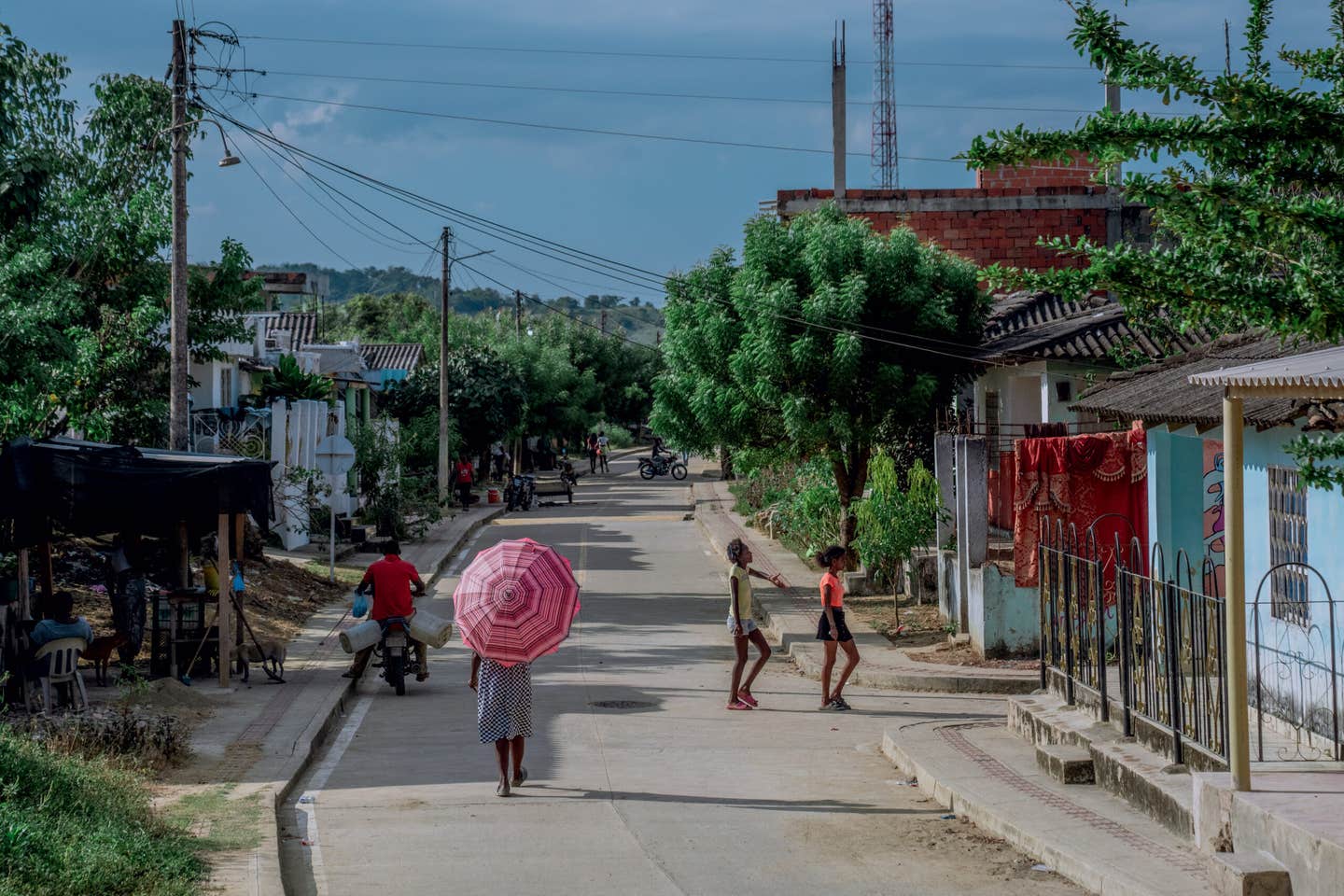
“Everything we do—how we learn how to use our environment, how we prepare the plants that grow nearby, the way we prepare fish, the way we prepare our medicine—it’s a result of our heritage from the African people,” says Víctor Simarra Reyes, a chef, educator, and an advocate for Palenque pride.
Just a few blocks away from Biohó’s statue, at a friend’s home, Reyes has prepared an exquisite meal for us. Quiet and uninterested in small talk, Reyes focuses on getting the food to our table, which is covered in bright, pear-green banana leaves. Within just a few minutes, there are generous helpings of meat, rice, stews, and sauces. Reyes throws his towel over his shoulder, and gestures with his hands in urgency.
“Eat,” he says. And so we do. I take handfuls of hen and cassava in a lightly sweet coconut sauce, served with a thick red bean pottage. We all take increasingly bigger bites of his bollo de plátano con cerdo asado, a traditional plantain bun cooked with roasted pork; and his cabeza de gato, a smashed green plantain snack he’d decided that day to combine with a kind of fresh cheese. We enjoy our share of sweets during a magnificent dessert spread: alegría, like the palenqueras served, sweet and fragrant with coconut, and enyucado, a cassava cake enlivened with star anise.
It’s a marvelous feast that clearly has required hours of cooking. Reyes explains that he chose to share these dishes not in spite of their difficulty, but because of it. “We wanted to show that this cooking is not simple,” Reyes says. “It requires a lot of time, and a lot of effort.” This education is part of a larger movement that Reyes has long championed—working with Palenque cooks and chefs to preserve and create from their local foodways, rather than have their food expressed by non-Black chefs and writers. He has become a voice for sharing what he describes as Palenque’s “rustic” dining with the world, and fully and proudly communicates the integral role African roots play in their food.
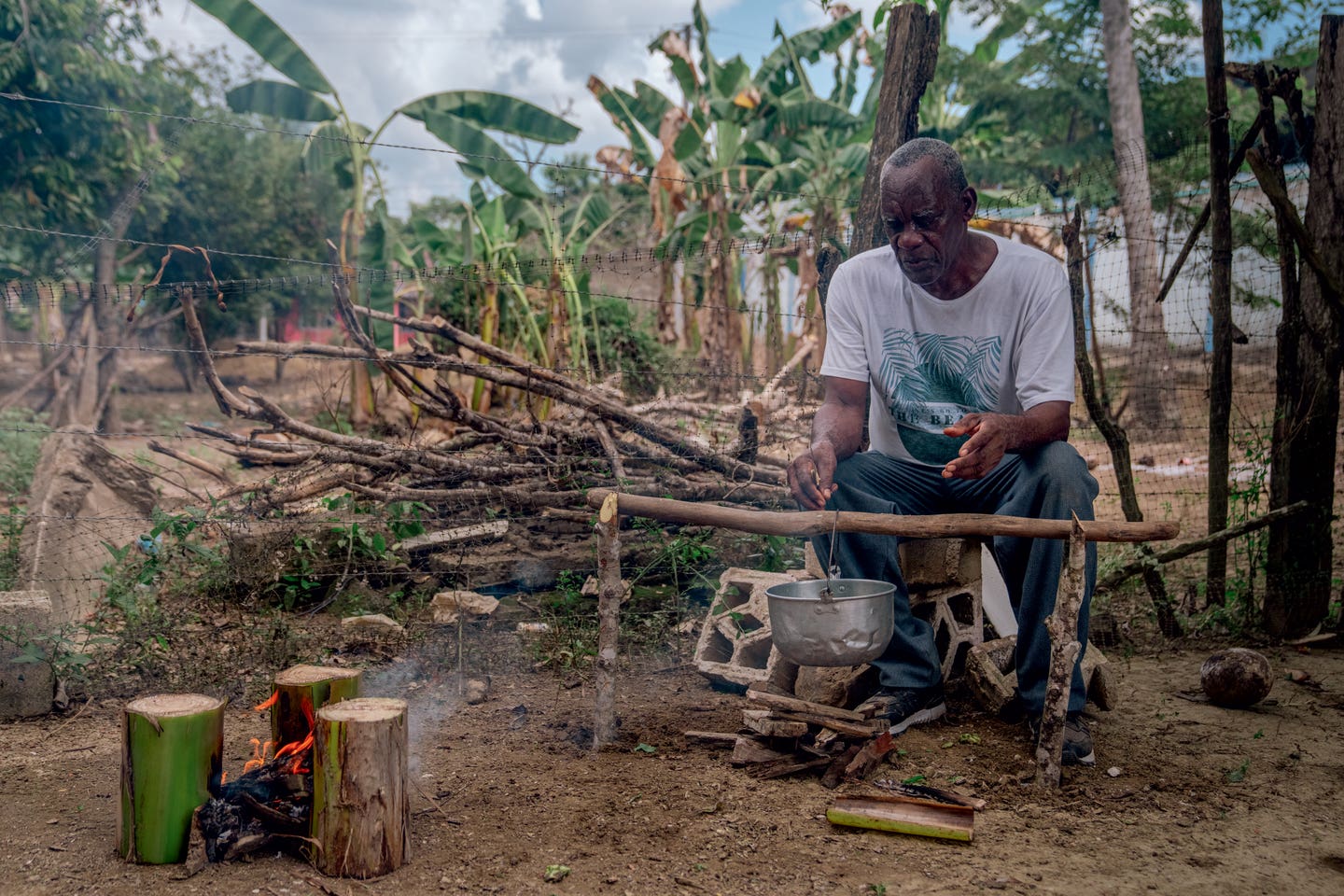
Reyes’ work is documented in the cookbook Kumina ri Palenge pa tó Paraje, or “Palenquero Cooking for the World,” in English: a community collaboration he spearheaded to document recipes spanning more than 300 years of the town’s history. He and his wife, Ruth Reyes, consulted more than 600 local home cooks, collecting recipes and selecting an elite group of recipe writers and testers. “We were the first ones to go through the recipes, collect them, and put them on paper so we don’t let these traditions die,” Reyes says. Together, they produced the first cookbook documenting Palenque’s cuisine, which went on to receive the “Best Cookbook in the World” award at the 2014 Gourmand World Cookbook awards in Beijing.
Before Reyes was a chef, he was a young African Colombian boy, helping his grandmother with her sancocho trifásico, a three-meat soup that typically took a full day to prepare. Often served with cassava and rice, both of which Reyes says are mainstays of the local diet, the soup is a peppery, aromatic, and deeply soothing dish that has persisted in home kitchens. He recalls the once-ubiquitous (and labor-intensive) bollo de maíz, a fried, roasted corn snack, which he laments had disappeared from many Palenque homes by the time he was a young man.
I get the chance to experience some of this labor with Antonia Cassiani, a Palenque native and local tour guide who goes by the name “Samba.” Gripping a massive pestle along with another partner, we rhythmically beat the corn as our group sings songs to encourage us. The process is reminiscent of an enduring practice in which women pile rice, grains, or corn into a massive wooden mortar and use their physical strength to do what locals call, “pillaring the corn.” That is, grinding the ingredients while singing songs that illustrate their dreams, concerns, and everyday thoughts. “This kitchen instrument was the creative engine of many women who poured their ideas into it, and sang their sorrows to it,” says Reyes. “It’s another example of just how important Black women are to our community, and to our food.”
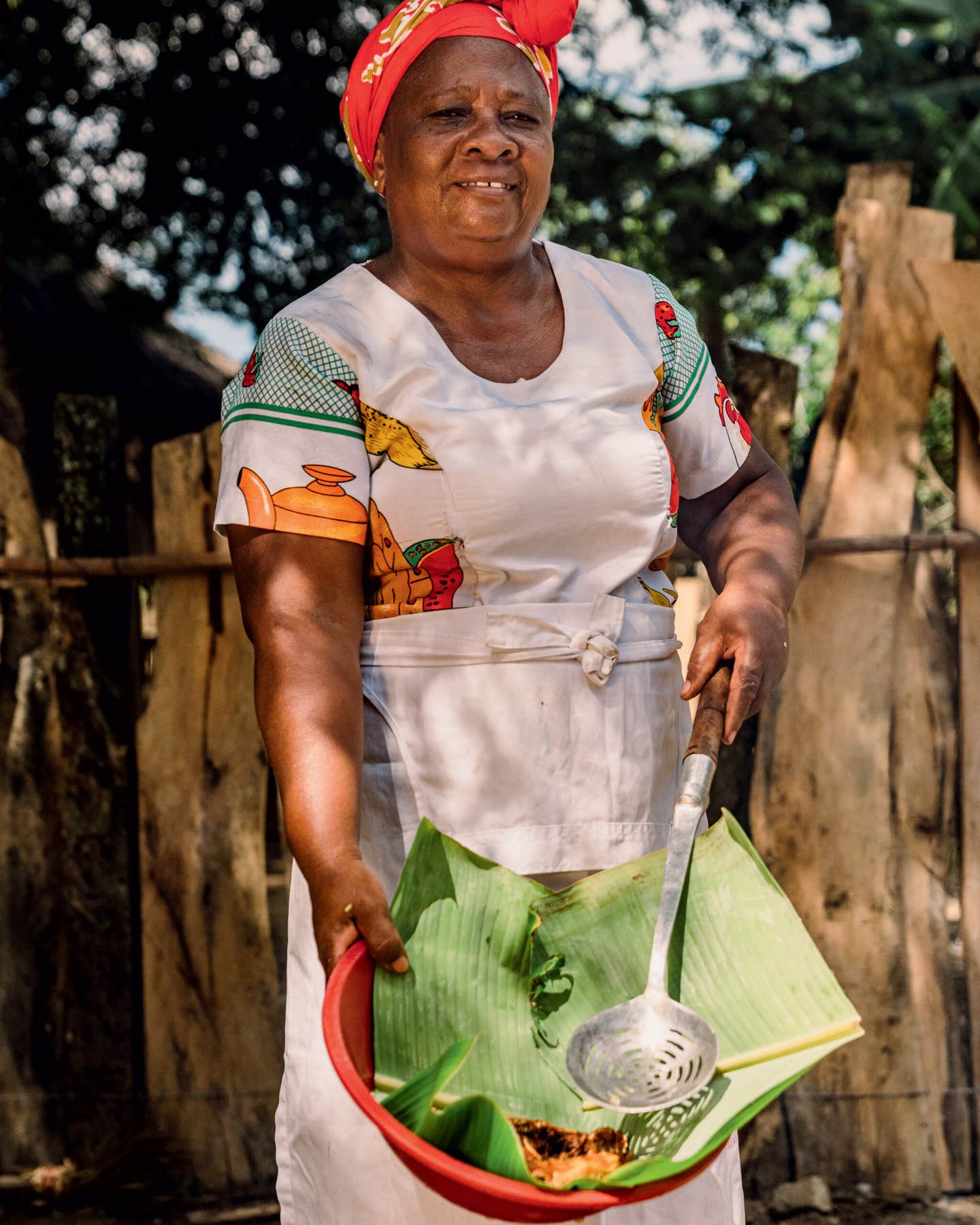
When Reyes first started cooking, he picked up history and recipes orally; it wasn’t until later in his life that he learned to read and write so he could record and share his knowledge. When he graduated from elementary school at the age of 50, he immediately put his new skills to use: As part of his graduation requirements, which encouraged students to do something impactful for the community, he authored the cookbook. The goal for most, it seems, in Palenque, is not to climb and climb and climb chasing trivial achievements, but rather to salvage, to save, and to secure.
“I take pride in my role as the representative of our traditions and our cuisine,” says Reyes. “After all these years of working, that’s what I cherish most.”
Palenque hasn’t always been so comfortable with sharing its culture: The legacy of colonization has made many in the community understandably resistant to outside influence. Even Ruth, Reyes’ wife, was considered suspicious when she first moved to Palenque from the similar small Colombian town of San Antonio. An outsider, then, was always an outsider. But Reyes and his peers are learning to embrace opening their doors to other descendants of the African diaspora.
“I’m very joyful that the community of Palenque is very open,” Reyes says of the shift. “My heart warms every time I see 80 buses full of tourists. Palenqueros are welcoming them and are showing their traditions, their cuisine, and their culture. They’re taking pride in it and showing it to the world.”
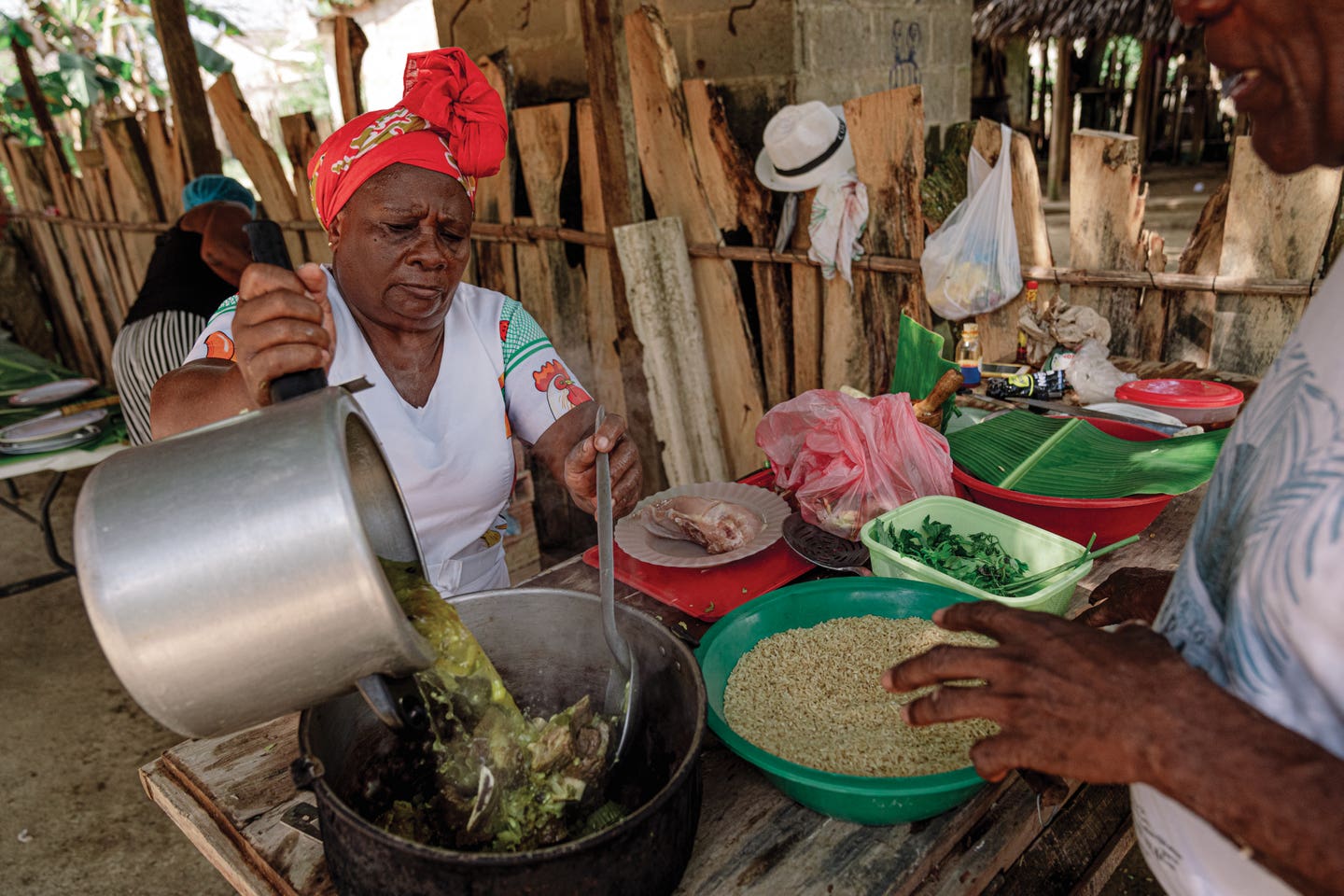
Reyes and his peers recognize a solidarity among curious Black travelers who come to Palenque. It might be for the food, the music, or simply the evidence that we all have a shared home, a shared origin story. The canvases on which we were forced to design a life reveal a common search for freedom—perhaps most evidenced in our ability to survive and thrive in different parts of the world.
Prior to my departure, I visit Biohó’s statue once again, his face charged and yearning to be free. My own family, like many others, were enslaved on American coasts in the Deep South, and though Emancipation supposedly gave us freedom, it would be another century before my people gained equal rights in the United States. The quest for Black liberation can be devastating. Our culture, heritage, and contributions are still often misrepresented or under - appreciated. We lose our heroes to state-sanctioned violence, are lectured about our behavior, and are chastised for demanding a society where equity and decency are primary values.
“There’s a phrase that resonates here,” Pedro Mosqueda, a chef and student of Reyes, tells me. “I’m happy, and it is not because of the music, but because of the leader who gave me my freedom.” As I gaze upon the town, filled with Afro-Colombians dancing, playing soccer, and lounging out under the dazzling sunset, I remember that freedom is so often something we find within ourselves.
Recipes
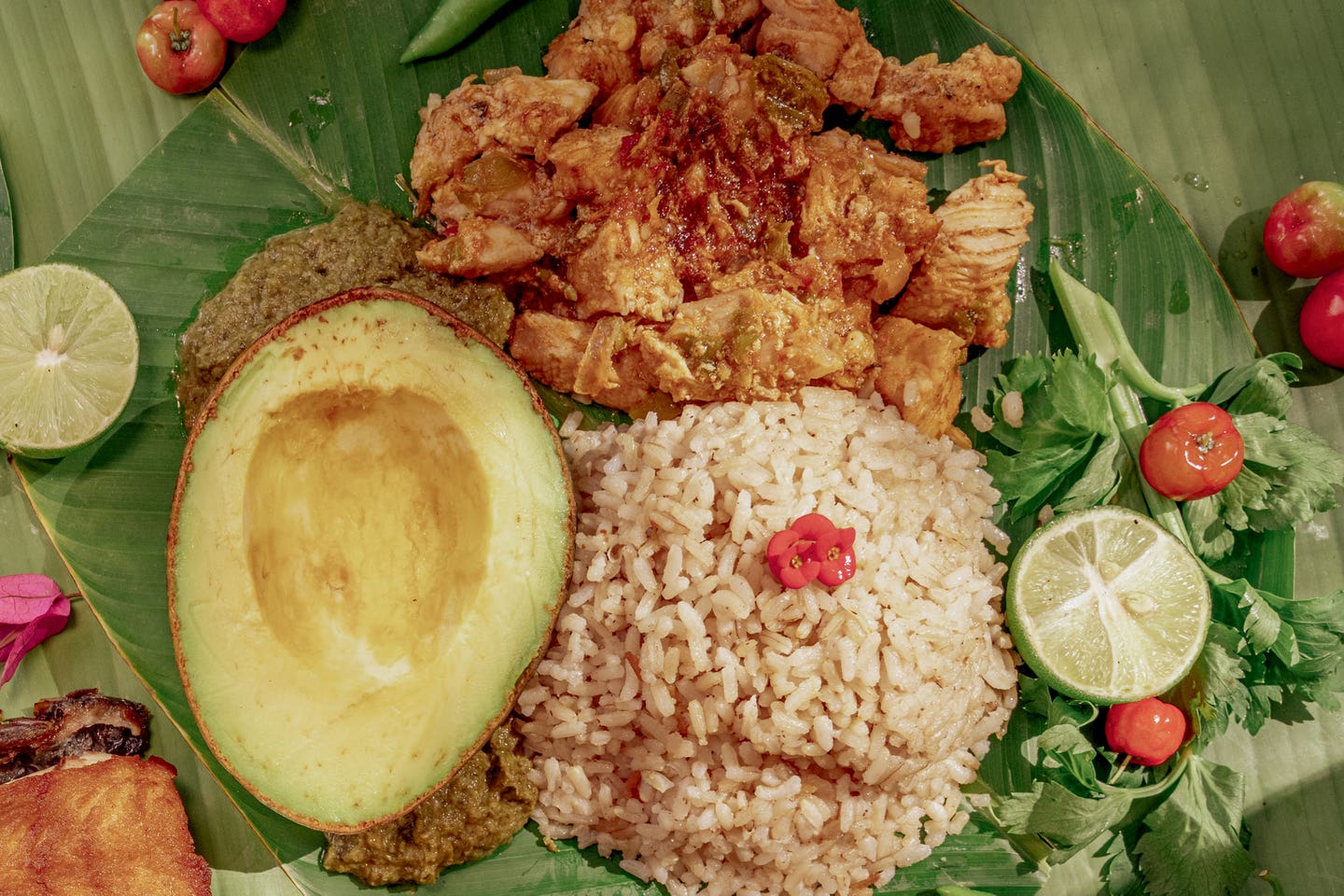
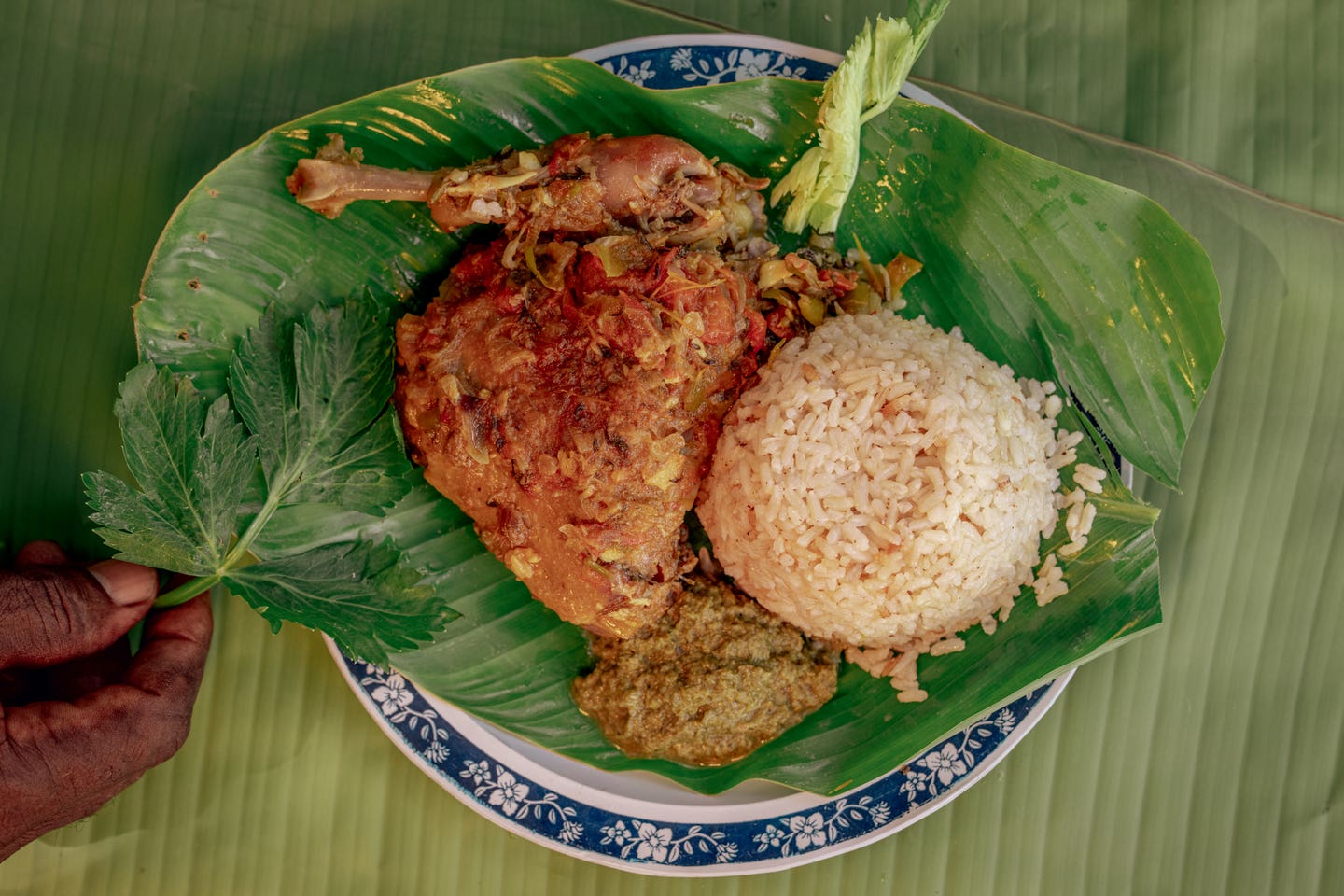
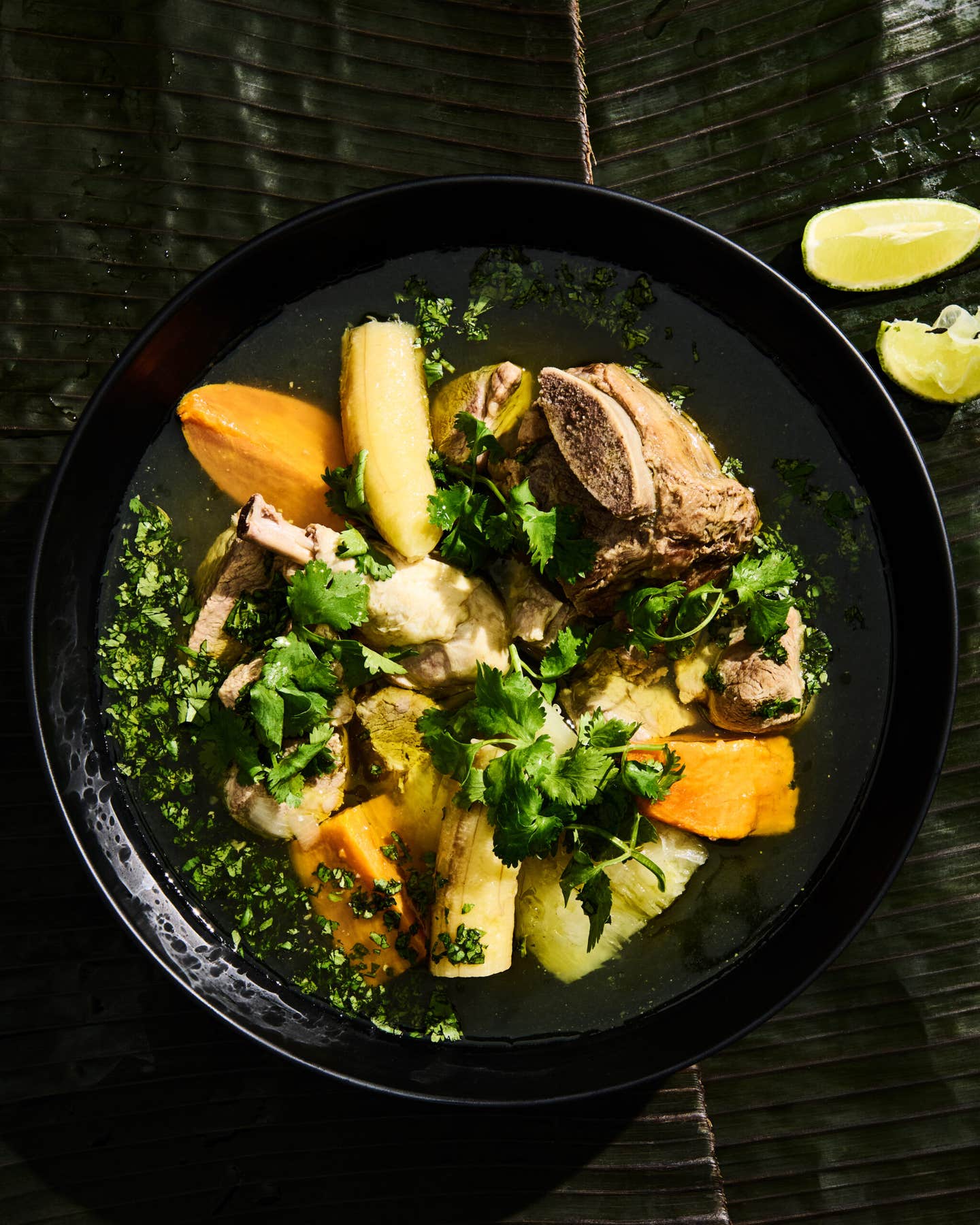
Keep Reading
Continue to Next Story









